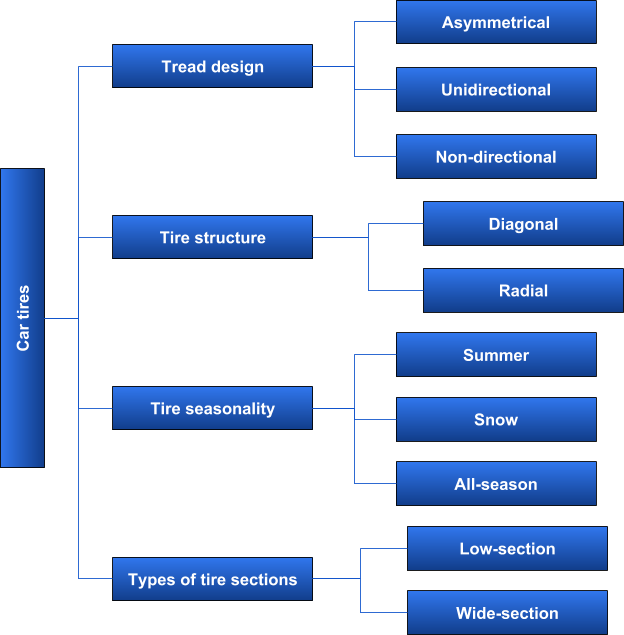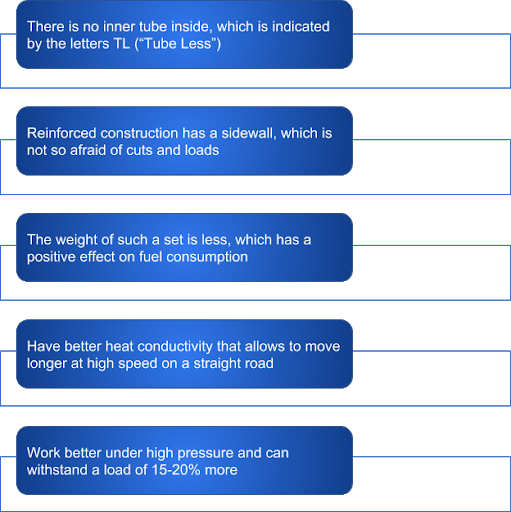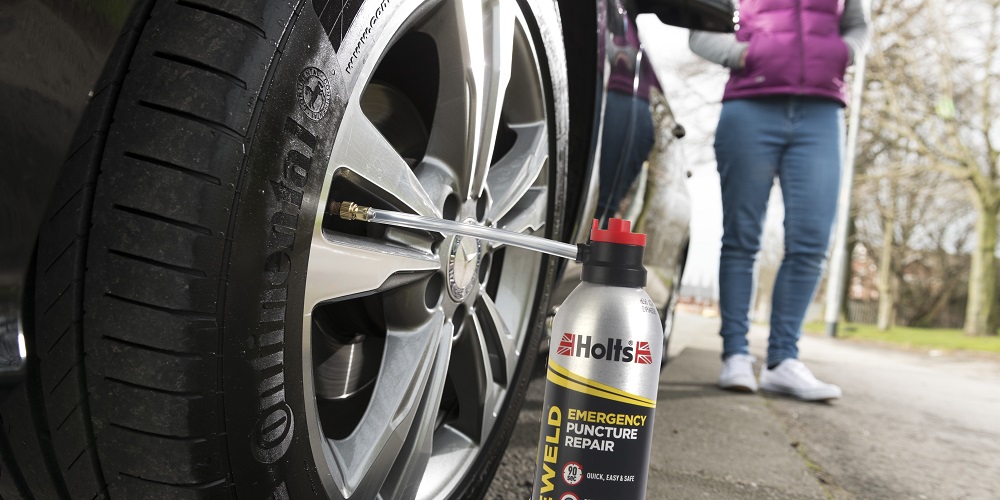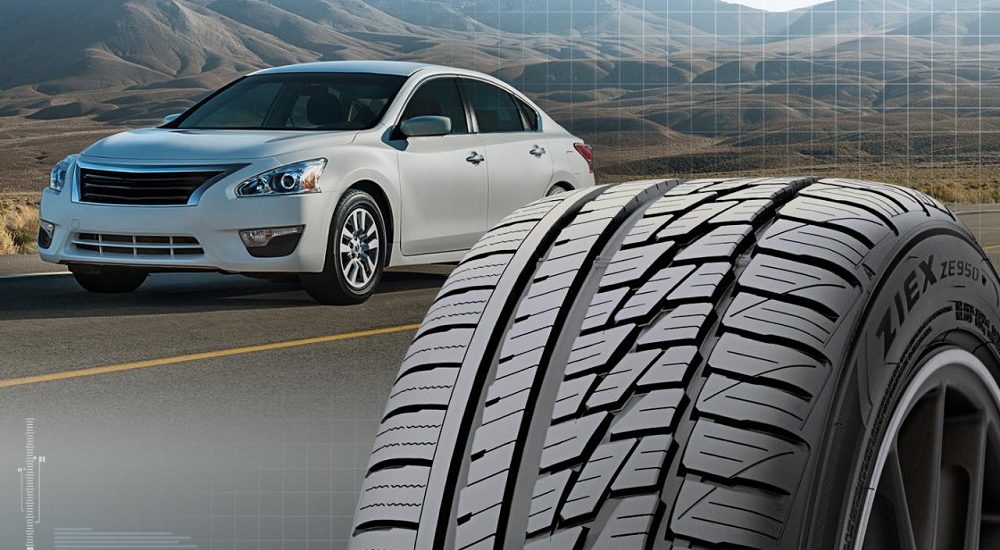Automobile tire is one of the most important elements of a wheel, which is an elastic rubber-metal-fabric shell mounted on a disk rim. Properly selected tires provide safety, comfort of the ride, handling and off-road capability. In order not to be mistaken with the choice of tires, you should orient in them. This article will help you with this.
Typology of car tires

Tread design
The tread design is an important characteristic of automobile tires. The tread maximizes a patch of contact with a road and helps to divert water and slush, preventing rubbing. Wheels can be both with unidirectional and non-directional design or asymmetric structure. They differ in their technical characteristics, cost of production and recommended conditions of use.
If the surface of the product is marked with “outside”, this means that the rubber has an asymmetrical pattern. In fact, it is like two assembling wheels, and one part is designed for wet pavement, and the other for dry asphalt. The outer side is experiencing great overload during maneuvers. Accordingly, the sides have different degrees of stiffness in order to ensure maximum adhesion of wheels to the road surface. Due to their versatility and technological complexity of the process, such products are 15–20% more expensive.
The “Rotation” label located on the side surface means a rubber with an unidirectional pattern. Design of such tires allows you to effectively divert water on the wheels and ensure good contact with the road in bad weather conditions. The presence of unidirectional tread on a tire makes it possible to reduce the likelihood of aquaplaning due to the rapid removal of water from the place of the wheel’s interaction with the road. The main disadvantage of this type of car tires is the inability to quickly replace without removing it from the disk. Therefore, it is recommended to carry a spare tire with a universal non-directional pattern so that the installation on the right front or left rear seat doesn’t cause problems far from the car service center.
A rubber with non-directional pattern is considered to be universal. This means a standard, average wheel function. Tires of this design are usually produced in large quantities by automakers, and therefore are cheaper than other ones.
Structure of carcass
The design features of car tires depend on the structural features of carcass and breaker. There is a frame that is responsible for the product’s rigidity under the rubber layer. A large number of metal or capron threads form a solid construction that sets technical parameters of a wheel. In particular, the index of maximum permissible load (kg) on one wheel depends on it. This parameter is indicated near dimension of a tire. The larger the parameter, the more weight the wheel can carry. Sometimes there is an additional “Reinforced” parameter in the marking, which indicates an increased number of cord threads, that increases the load index by three units. By type of weaving, tires are divided into diagonal and radial.
Diagonal tire is not too expensive because it is suitable for use at low speeds. The basis of such tires are kapron or nylon threads, arranged in several layers.
Tires with radial arrangement of cord threads have higher quality (and also cost). Metal threads form rings that don’t intersect each other, and an undertread band is completed with an additional strengthened cord. Such tires are more preferable for a car:

Seasonality factor
Depending on a season, tires can be summer, snow and all-season. If the grade of the rubber mixture is hard, the rubber is summer – the grip with expensive one is effective even at high speeds. Summer tires are characterized by a smoothed section, a developed cooling system and don’t need additional signs when marking. But as soon as the air temperature down to at least seven degrees Celsius, summer tires harden and no longer clings to the asphalt. Because of this, the stopping distance increases, and also there are incorrect reactions of the car to maneuvers. There are such varieties of summer tires as intended for off-road trips, rain tires (more precisely, “anti-rain”), high-speed, reinforced, etc.
In winter, a car should “wear” soft rubber varieties. Such sets are marked with a snowflake icon or the letter W-winter at the end of the product. Tires for winter driving can be studded and non-studded. Tires with special metal studs are necessary for an icy surface. However, in some European countries, where the pavement is well cleaned in winter, studded tires are prohibited – they damage asphalt and quickly erases. You can drive on studded tires only in conditions of ice and glaciation of a roadway. Winter tires are more expensive, but provide excellent handling.

In friction products, the design of the tread layer has a clear wave-like character. Winter tires of friction nature is divided into Scandinavian and European types. The first is designed for harsh conditions and has a more expressed pattern. In addition, anti-skid chains can be helpful. In anti-skid chains, cars have a speed limit of 40 km/h. Scandinavian tires, designed for severe frost and snowy weather, have the marking:
Nokian HKPL R2 – real Scandinavian winter friction tire
Q (160 km/h)
R (170 km/h)
T (190 km/h)
Scandinavian tires have a soft tread.
European tires are denoted by the symbols H (210 km/h), V (240 km/h), and T index (190 km/h). The latter type is an exception and is found at lower car capacities with a small tire size. These tires are used for both snow and asphalt.
There are also all-season tires, that are denoted by the letters M+S, AS or 4S (Mud+Snow, All Season, 4Season). All-season tires are a compromise solution for a driver, but they are not a panacea. However, the best option of all-season tires is the temperature around zero.
Characteristics of section
A manner of driving depends on a type of tire section. Tires can be of European (hard) and American (soft) types, as well as medium hardness (studded). If the section is low, there is a maximum contact patch that lets you drive dynamically. This allows you to realize the engine’s potential, improves handling, car stability and reduces braking distance. But such wheels, due to their structure, are less comfortable. The disadvantages of low section tires include increased noise, rigidity and the likelihood of slipping on wet roads. In addition, smooth roads without bumps are better suited for driving on low-section tires, since hitting the pit threatens to damage the disc. Therefore, with low-section tires, you should avoid high elevations, holes and country off-road.
A wide-section tire has a more developed pattern, feels better on wet pavement and is less prone to aquaplaning. These tires softer and better protect the disc when it enters the pit. The symbols TWI shows the degree of pattern’s wear. This indicator is applied in various places of the tire and allows you to determine the replacement time.
RunFlat tires
Tires with tread pattern with All Steel cut and rigid sidewalls are called run-flat. Often, European automakers equip their cars with such kits as standard. Due to the special design, these wheels can travel 80-150 km in the absence of pressure in the tires at a speed of 70 km/h. At the same time, after repair and installation of the wheel in its place, the tires remain serviceable. You can indicate such products with marking RF (Run Flat) on the inside cover.
Continental’s ContiSeal technology involves applying a viscous mass to the inside of a wheel. It allows to fill punctures from nails, screws and other prickly products. As a result, the hole from the puncture is sealed immediately and without pressure loss. Thus, a tire with ContiSeal technology can seal punctures in diameter of up to 5 mm itself without pressure loss, and the car can confidently continue driving.

Modern drivers try to buy high-quality tires and not skimp on their safety. Rubber compound is made from oil and rubber. Branded tire can consist of more than ten layers in order to perform all the functions assigned to it: to brake quickly, to prevent aquaplaning, to maneuver well, etc. But before you think about tires, you need to purchase an international driver’s license. You can do it right now on our website.

Published February 18, 2019 • 8m to read






